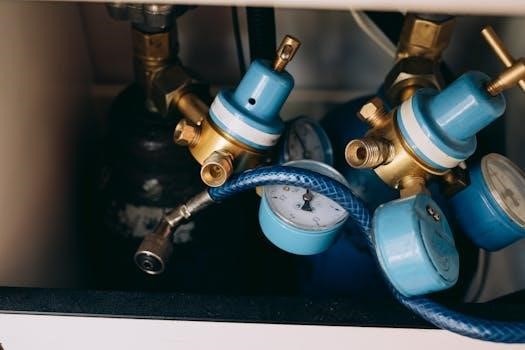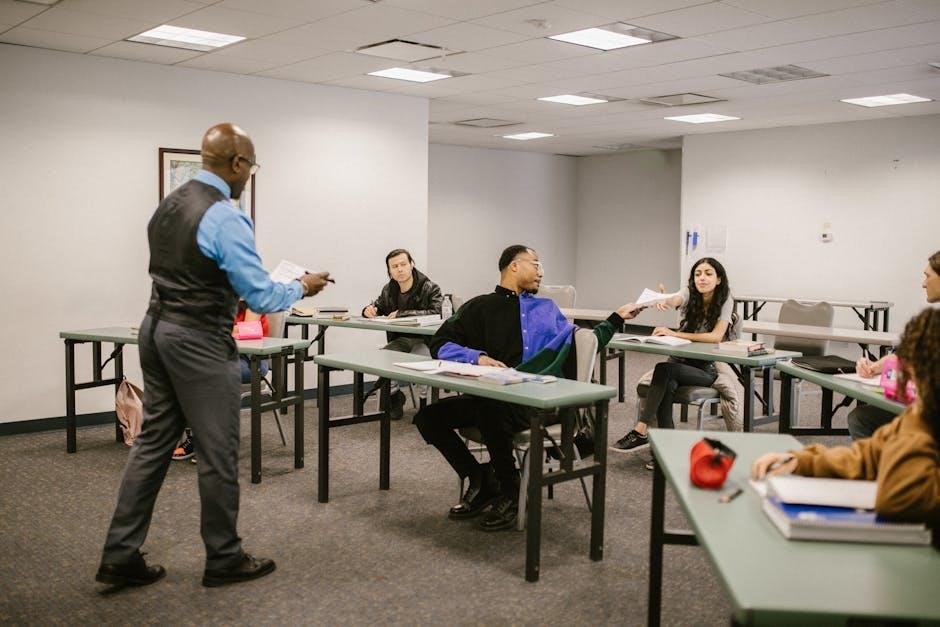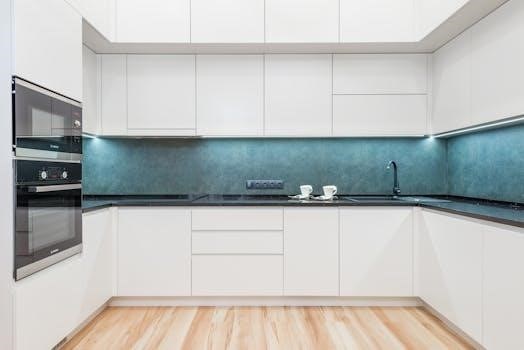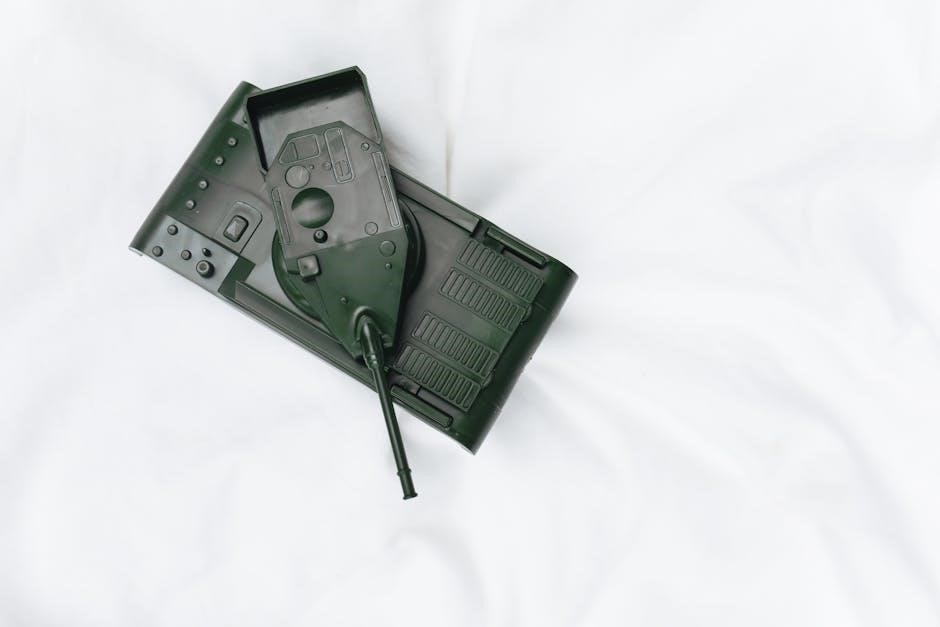gas fireplace remote control instructions
Gas Fireplace Remote Control⁚ An Overview
A gas fireplace remote control offers convenient operation, allowing users to easily turn their fireplaces on and off. These remotes, though convenient, can sometimes fail, requiring troubleshooting to ensure proper functionality. Understanding the basics of your specific remote is crucial for effective use.
Understanding Remote Control Functionality
Gas fireplace remote controls typically operate by transmitting radio frequency signals to a receiver unit connected to the fireplace. This receiver interprets the signals, activating the gas valve and igniting the flame. Functionality can vary between models; some remotes offer basic on/off control, while others include options for adjusting flame height, fan operation, and even lighting. The remote acts as a convenient interface, eliminating the need for manual operation of the fireplace. It’s essential to understand that the remote is not directly connected to the gas line itself, but rather controls the electrical components that manage the gas flow and ignition; Proper understanding of these functions helps in identifying potential issues and troubleshooting problems effectively. Some remotes also feature safety mechanisms, such as automatic shut-off after a period of inactivity, enhancing user safety and preventing potential hazards. Familiarity with these operational aspects is key to maximizing the benefits of your remote control system. In addition, some remotes may require a pairing process to establish communication with the receiver, especially after battery replacement or if the connection is lost.
Common Remote Control Issues
Several factors can cause a gas fireplace remote to malfunction, including dead batteries, contact problems, and pairing issues. These problems can prevent the remote from properly communicating with the fireplace.
Dead Batteries and Contact Problems
One of the most frequent reasons a gas fireplace remote stops working is due to dead or weak batteries. Like other battery-powered devices, remotes require sufficient power to operate effectively. When the screen stops lighting up or the controls fail, it’s time to replace the batteries. Ensure you install them correctly according to the polarity markings. Another common issue involves dirty or corroded contacts within the remote or the receiver. These contacts are essential for transmitting signals, and if they are obstructed, the remote may not function. Carefully cleaning the contact points with a soft cloth or a contact cleaner can often resolve this problem. Regularly checking both the battery charge and the condition of the contacts is a simple yet crucial step in maintaining the functionality of your gas fireplace remote.
Remote Not Paired with Receiver
A gas fireplace remote control must be properly paired with its receiver to function correctly. If the remote and receiver are not communicating, the fireplace will not respond to remote commands. This pairing process is crucial, especially if you’ve recently replaced the remote or receiver or if the connection has been lost. Many remote systems utilize a “learn” function that must be activated to establish the connection. If you have a new or replacement remote and you are having difficulty, please consult your manual for the correct process. Ensure that the receiver is also properly connected to the fireplace control, and that you have checked the batteries in both devices. The receiver may be located near or within the fireplace itself.

Troubleshooting Steps
When a gas fireplace remote malfunctions, basic troubleshooting is key. Start by checking batteries and cleaning contacts. Verify remote compatibility, and if issues persist, delve into more advanced tests and checks.
Checking Battery Installation and Charge
One of the first and simplest troubleshooting steps for a non-functioning gas fireplace remote control is to check the batteries. Ensure that the batteries are correctly installed in both the remote and the receiver, paying close attention to the polarity (+ and -) markings. Often, incorrect installation can prevent the remote from working, even if the batteries are new. Make sure you use the correct type of batteries specified in your remote’s manual. If the remote’s screen is dim or the controls don’t respond, it is a clear indication that the batteries need replacing. It’s important to replace old batteries with fresh ones, as even partially discharged batteries can cause operational issues. If you have a battery-operated receiver, check its battery charge too. A fresh set of batteries in both the remote and the receiver may resolve the problem quickly. Also, try cleaning the battery contacts with a dry cloth to ensure a good connection.
Cleaning Remote and Receiver Contacts
If checking the batteries doesn’t solve the problem, the next step is to clean the contacts on both the remote and the receiver. Over time, these contacts can accumulate dirt, dust, or corrosion, which can interfere with the electrical signal. Begin by powering off the fireplace and removing the batteries from both the remote and the receiver. Use a dry, clean cloth or a cotton swab to gently wipe away any visible debris. For stubborn buildup, lightly dampen the swab with isopropyl alcohol, ensuring it’s not dripping wet, and carefully clean the contacts. Avoid using water or other harsh chemicals as they can damage the components. Allow the contacts to dry completely before reinserting the batteries. Ensuring clean contacts will allow for a proper connection between remote and receiver, potentially resolving the issue. Clean contacts will improve conductivity.
Verifying Remote Compatibility
After trying other troubleshooting methods, verifying the remote’s compatibility with your fireplace model is crucial. Not all remotes work with all gas fireplaces, and using an incompatible remote can lead to operational issues. Check your fireplace’s manual to identify the specific remote model that is meant to be paired with it. If you don’t have the manual, look for a model number or serial number on the fireplace itself and search online for the correct remote. Some manufacturers offer specific remotes for different models, and using the wrong one may result in the remote not functioning properly. If you purchased a replacement remote, verify that it’s the exact model as your original. Compatibility is vital. Ensure that the frequency matches.

Advanced Troubleshooting
If basic troubleshooting fails, more in-depth checks are needed. These include testing the thermocouple and inspecting the gas line. These steps often require a professional’s expertise for safe and accurate results.
Testing the Thermocouple
A faulty thermocouple can prevent your gas fireplace from igniting, even with a functioning remote. The thermocouple is responsible for sensing the pilot flame and ensuring the gas valve remains open. If the thermocouple is broken, it won’t detect the flame, causing the gas to shut off. To test it, first ensure the pilot light is clean. Then, attempt to light the pilot and observe if it stays lit. If it goes out quickly, the thermocouple may be the issue. A simple test involves using a lighter to directly heat the thermocouple. If the pilot stays lit when heated this way, it indicates a thermocouple problem that may require replacement. Alternatively, some remotes need a minimum millivolt reading from the thermopile, often around 200, to operate properly. If the fireplace still won’t ignite, it’s recommended to seek professional help from a qualified fireplace technician.
Inspecting the Gas Line
If your gas fireplace isn’t igniting with the remote, a crucial troubleshooting step involves inspecting the gas line. Begin by ensuring the main gas supply valve to the fireplace is fully open. If the valve is closed, the fireplace will not receive gas, regardless of the remote’s functionality. Next, verify that the gas line is not kinked, blocked, or damaged, as any obstruction can impede gas flow. A thorough check for leaks is essential; apply soapy water to gas line connections and look for bubbles, indicating a leak. If you suspect a leak, immediately shut off the gas supply. If the gas line appears intact but the fireplace still fails to ignite, there might be an issue with gas pressure or internal components; it is best practice to contact a professional gas plumber for further investigation. Remember to always prioritize safety when dealing with gas lines.

Remote Control Programming and Pairing
Pairing your remote control is essential for proper operation. Specific pairing processes vary among different fireplace models, usually involving a learn function button on the receiver or utilizing a mobile application.
Pairing Process for Different Models
The pairing process for gas fireplace remote controls differs significantly depending on the manufacturer and model. Some remotes use a “learn” button located on the receiver, which needs to be activated while pressing a button on the remote. Others might require a specific sequence of button presses on both the remote and the receiver to establish a connection. Modern fireplaces may even utilize a mobile application for pairing, where the app guides you through the necessary steps. It’s crucial to consult your fireplace’s user manual for the precise pairing instructions. This ensures compatibility and avoids any potential issues during operation. Incorrect pairing can lead to the remote failing to control the fireplace, causing frustration. Therefore, always follow the manufacturer’s guidelines and double-check that your remote is compatible with the fireplace model you own. If you are unsure, contacting a professional fireplace technician may be beneficial.

Maintenance and Prevention
Regular cleaning of both the remote and receiver is essential for optimal performance. Handle the remote carefully to prevent damage. Scheduling professional maintenance can also prevent future issues with the fireplace and remote.
Regular Cleaning and Care
To ensure the longevity and proper function of your gas fireplace remote control, regular cleaning and care are paramount. Dust and debris can accumulate on both the remote and the receiver, leading to poor contact and unreliable operation. Begin by gently wiping down the remote with a soft, dry cloth, avoiding any harsh chemicals that could damage the plastic or electronic components. Pay close attention to the buttons and any crevices where dirt might collect. For the receiver, use a soft brush or a vacuum with a brush attachment to remove dust. Ensure that the receiver’s contact points are free from any buildup; These simple steps, performed routinely, can significantly enhance the performance and extend the lifespan of your remote control system. Proper care can also prevent the need for frequent replacements.












Leave a Comment